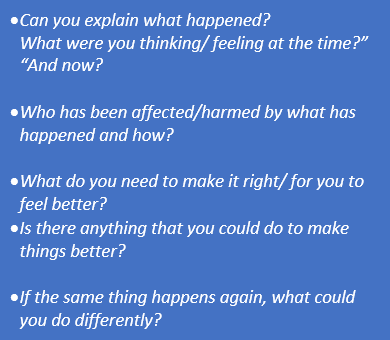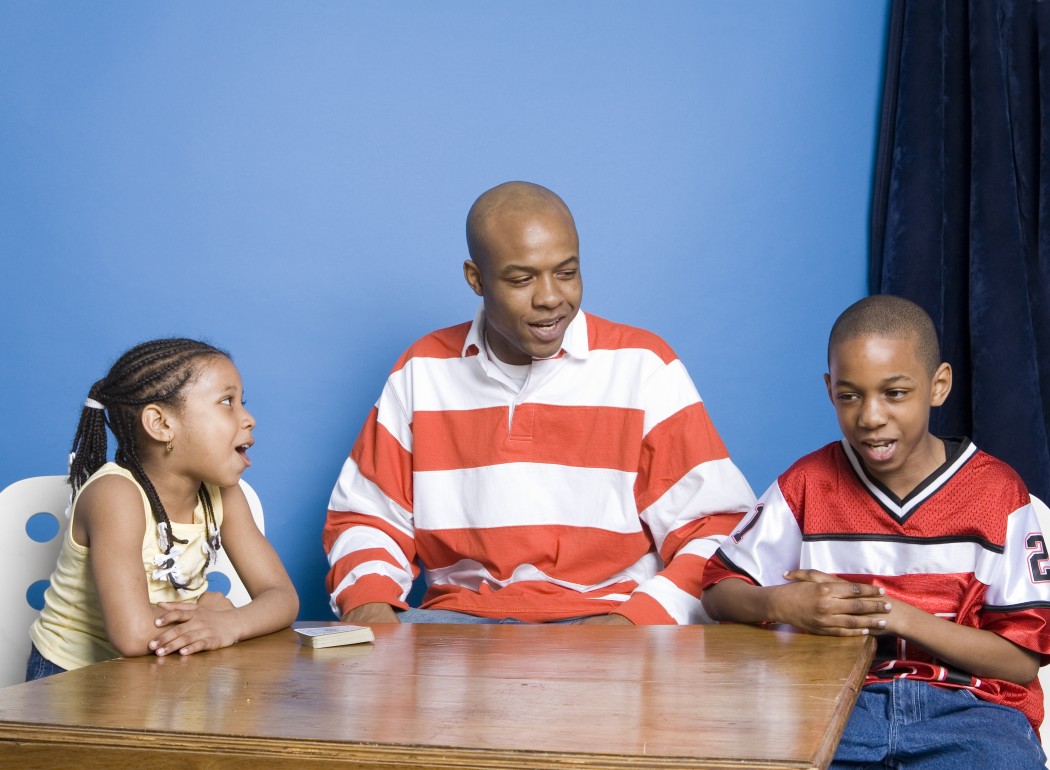We have recently been delivering Restorative Parenting Workshops in schools, which have been very well received, so we decided to ‘spread the word’ by writing a blog.
Whilst Restorative Approaches have traditionally been seen in the criminal justice and youth offending systems, as well as more recently and, increasingly, in schools, it is also something that parents and carers can use very effectively at home.
Using a Restorative Approach is not just the latest ‘fad’ in education, its roots go back hundreds, if not thousands, of years to traditional, indigenous communities like Native Americans, Aboriginals and Maoris. Who, whenever there was wrongdoing or conflict within their community, would come together peacefully, in a circle, to discuss it and agree reparation.
In contrast to traditional, punitive methods of discipline, where the focus is on who’s to blame and what the punishment should be, the restorative approach looks at what harm has been caused and how can it be repaired. It is underpinned by the restorative values of empathy, accountability and putting things right for all involved. Relationships are at the heart of the restorative approach. We like to call it ‘The 4 Rs of a Restorative Approach’ – Relationships, Responsibility, Reparation, Resilience.
There are many reasons why using a restorative approach is especially important in today’s world, where we are facing a worrying increase in knife crime, less sense of belonging and increased mental health issues in young people. Also, the increasing use of digital media is decreasing our face-to-face interaction, which means that children are spending less time developing social skills, such as empathy. Empathy is proven to impact children’s future success in all areas of life; relationships, career, emotional well-being. Using a restorative approach helps to redress this balance. Not only does it seek to repair harm and restore relationships, but the process and questions involved, encourage children to take responsibility for their actions, realise the impact of their actions on other people, develop empathy, understand how their thoughts and feelings affect their behaviour, and learn vital problem-solving skills. All of which increase children’s resilience and their ability to cope with whatever life throws their way.
All this is in stark contrast to sanction-based discipline, which usually does not affect any long-term change of behaviour, but rather can lead to relationship breakdown and resentment, or simply a change in behaviour to avoid punishment, not because of an understanding that it may be wrong or harmful. Nor does it provide an opportunity for children to learn from their mistakes.
So, how does it work?
Whilst restorative language can be used in our everyday life – talking about and sharing our thoughts and feelings in a supportive, non-judgemental way – let’s look here at using it in a targeted way, in response to an incident in a typical, family scenario:
Let’s say a fight has broken out between siblings because the younger sister has gone into her older sister’s room and taken something without asking. With a more traditional approach, perhaps the younger sister would be made to give it back and told that she mustn’t do that again, she must respect her sister’s property and must ask before using something. Or, perhaps, the older sister is told that she must be a bit more understanding of her younger sister and share her things. Both of which might resolve the situation short-term, but is it meeting their needs? Is any learning taking place and what might happen next time?
We want any wrongdoing or ‘misbehaviour’ to be used as a learning opportunity. After all, the word ‘discipline’ comes from the root word ‘disciple’ which means to teach or guide, not punish! And, using a restorative approach does exactly that.
 Using a restorative approach, the parent would bring the two together and ask each in turn a series of questions, in a neutral, non-judgemental way, without assigning any blame. They would ask the first one what happened, what they were thinking or feeling, both at the time and now, they’d then paraphrase what they’d heard, before asking the same questions to the second child. (Paraphrasing is important because not only does it clarify your understanding of what’s happened and lets the child know you’ve listened to them, it also ensures that the other child hears their sibling’s side of the story – they might not be listening when their sibling says it, particularly if they are angry at them, but are likely to listen when you do.) Hearing each other’s story and how they felt/are feeling is very powerful and helps children develop empathy and realise the impact of their actions oenn someone else. It’s far more powerful than simply being told by an adult. Next, you might ask them if anyone else has been affected and how (but this would depend on whether their behaviour has impacted others); this helps them to see the wider impact of their actions. Then, you would ask each in turn what needs to happen to repair the harm. It’s important that they come up with the solutions and we don’t jump in here. As adults, we often think we know what’s best and what needs to be done but we don’t really know what the children need to make things better and you might be surprised at what they come up with. It’s important that you get agreement from both as to what needs to be done and so you might need to go back and forth, if at first they don’t agree on a solution. You can do this simply by saying, ‘Can you think of anything else that you can both agree on?’ Once agreement on a way forward has been reached, finish off by asking ‘How can we make sure this doesn’t happen again?’ Again, allow them to come up with the ideas and value all ideas, until they come up with one that is doable.
Using a restorative approach, the parent would bring the two together and ask each in turn a series of questions, in a neutral, non-judgemental way, without assigning any blame. They would ask the first one what happened, what they were thinking or feeling, both at the time and now, they’d then paraphrase what they’d heard, before asking the same questions to the second child. (Paraphrasing is important because not only does it clarify your understanding of what’s happened and lets the child know you’ve listened to them, it also ensures that the other child hears their sibling’s side of the story – they might not be listening when their sibling says it, particularly if they are angry at them, but are likely to listen when you do.) Hearing each other’s story and how they felt/are feeling is very powerful and helps children develop empathy and realise the impact of their actions oenn someone else. It’s far more powerful than simply being told by an adult. Next, you might ask them if anyone else has been affected and how (but this would depend on whether their behaviour has impacted others); this helps them to see the wider impact of their actions. Then, you would ask each in turn what needs to happen to repair the harm. It’s important that they come up with the solutions and we don’t jump in here. As adults, we often think we know what’s best and what needs to be done but we don’t really know what the children need to make things better and you might be surprised at what they come up with. It’s important that you get agreement from both as to what needs to be done and so you might need to go back and forth, if at first they don’t agree on a solution. You can do this simply by saying, ‘Can you think of anything else that you can both agree on?’ Once agreement on a way forward has been reached, finish off by asking ‘How can we make sure this doesn’t happen again?’ Again, allow them to come up with the ideas and value all ideas, until they come up with one that is doable.
Using a restorative approach gives the conflict back to those whose conflict it is to resolve it. It allows the ‘victim’ the chance to be heard and enables the ‘harmer’ to see how what they have done has affected someone else and empowers them to put things right.
By repairing the harm, the relationship is restored. A restorative approach is a respectful, responsive way to manage wrong-doing, which creates a harmonious, happy home in which everyone feels valued and respected and where, importantly, they feel they belong.
For more information about how this approach is used in schools and the positive effect it can have, see our blogs ‘Building Responsible Children Using a Restorative Approach’ and ‘Embracing a Whole School Restorative Approach – the Positive Impact’.
Leave Your Reply
You must be logged in to post a comment.



